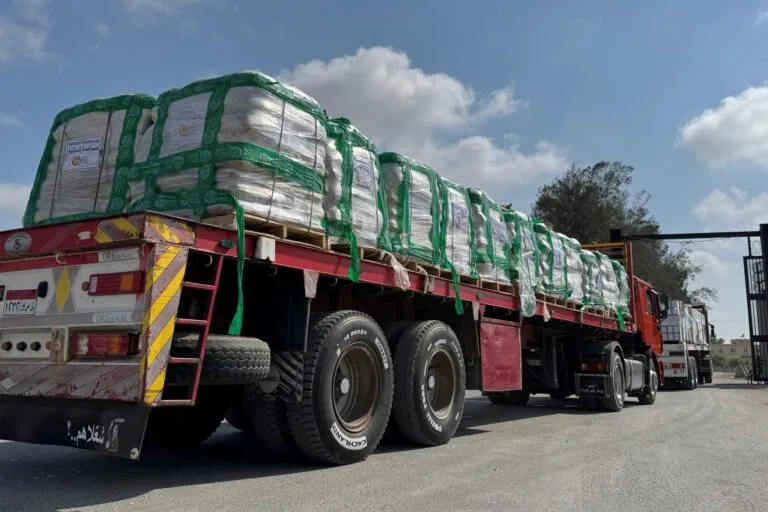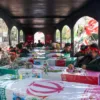Truckloads of aid reached desperate Gazans on Monday after Israel pledged to open secure humanitarian corridors, but relief agencies cautioned that far more assistance is urgently needed to prevent widespread starvation.
With Gaza’s population of over two million facing famine and malnutrition, Israel came under mounting international pressure over the weekend and announced a daily “tactical pause” in military operations in certain areas to allow aid delivery.
“For the first time, I received about five kilos of flour, which I shared with my neighbour,” said 37-year-old Jamil Safadi, who is sheltering in a tent near Al-Quds Hospital in Tel al-Hawa with his wife, six children, and ailing father.
Safadi, who has spent the past two weeks waking before dawn to search for food, said Monday marked his first success. Others were not as lucky. Several residents reported that aid trucks had been looted or that security guards fired on crowds near U.S.-backed distribution centers.
“I saw injured and dead people. People have no choice but to try daily to get flour,” said 33-year-old Amir al-Rash, who remains without food and is also living in a tent. “What entered from Egypt was very limited.”
Israel imposed a full blockade on Gaza on March 2 after the collapse of ceasefire talks, cutting off all access to aid until a small trickle resumed in late May.
According to Israel’s defense ministry agency COGAT, 120 truckloads of aid were delivered and distributed inside Gaza on Sunday, with more arriving on Monday. COGAT said an additional 180 trucks were currently awaiting pickup.
Critical shortage of supplies
While aid from Egypt and Jordan is beginning to flow, including airdropped packages from the UAE and Jordan, the United Nations and other humanitarian organizations say the current volume is far from adequate.
The UN Relief and Works Agency for Palestine Refugees (UNRWA) welcomed Israel’s limited humanitarian pauses but stressed that Gaza needs at least 500 to 600 truckloads of food, medicine, and hygiene supplies daily.
“We hope UNRWA will finally be allowed to bring in thousands of trucks currently waiting in Jordan and Egypt,” the agency said. “Opening all crossings and flooding Gaza with aid is the only way to avert further starvation.”
UNRWA said it has over 10,000 staff on the ground ready to distribute aid but continues to face obstacles accessing the supplies at Gaza’s border points.
“According to our latest data, one in five children is malnourished in Gaza City. More children have reportedly died of hunger, bringing the total number of starvation-related deaths to over 100,” the agency said.
Despite the resumed flow of some supplies, humanitarian agencies are calling for a permanent ceasefire, the full reopening of all border crossings, and a long-term humanitarian operation to prevent a catastrophic famine.
Ongoing violence and diplomatic deadlock
Even as aid begins to move, fighting in Gaza continues. On Monday, Gaza’s civil defense agency reported that 16 people were killed by Israeli airstrikes, including five in an overnight attack on a residential building in Al-Mawasi.
Among the victims was a pregnant woman. According to the Palestinian Red Crescent, her foetus was saved after a Caesarean section was performed at a field hospital.
The violence unfolds as truce talks between Israel and Hamas—mediated by Egypt, Qatar, and the United States—remain deadlocked. Prime Minister Benjamin Netanyahu has rejected calls for a ceasefire, insisting the military campaign will continue until Hamas is dismantled and Israeli hostages are freed.
Meanwhile, a United Nations conference in New York saw France and Saudi Arabia step up efforts to revive the long-stalled push for a two-state solution to the Israeli-Palestinian conflict.
AFP


